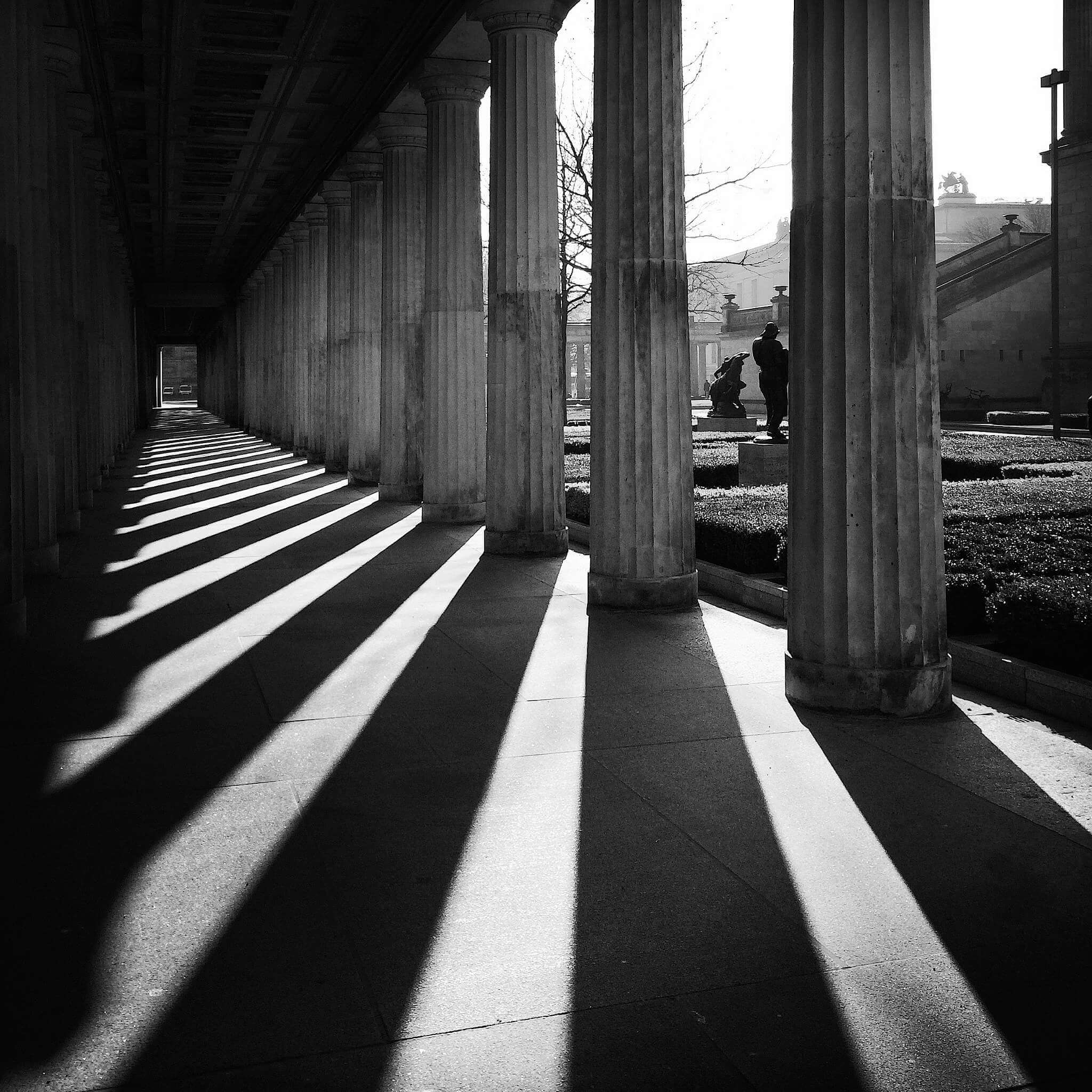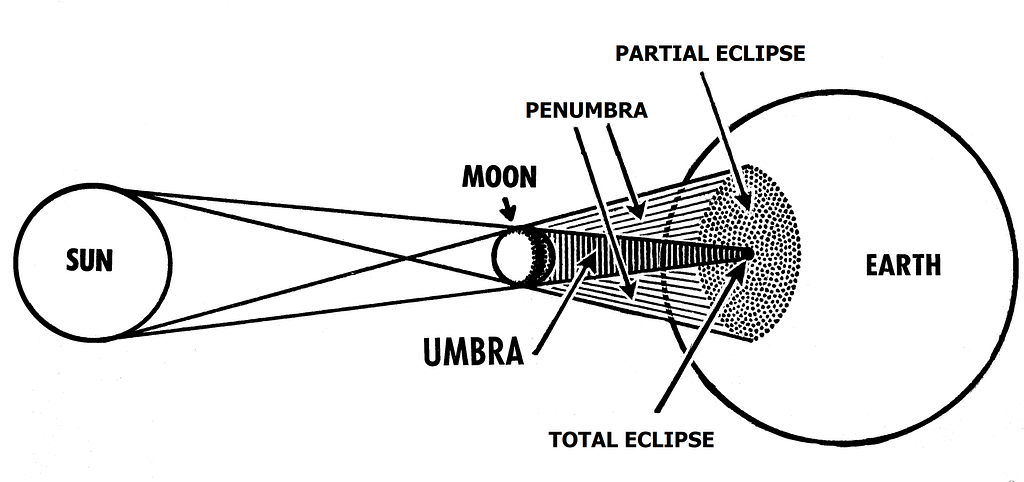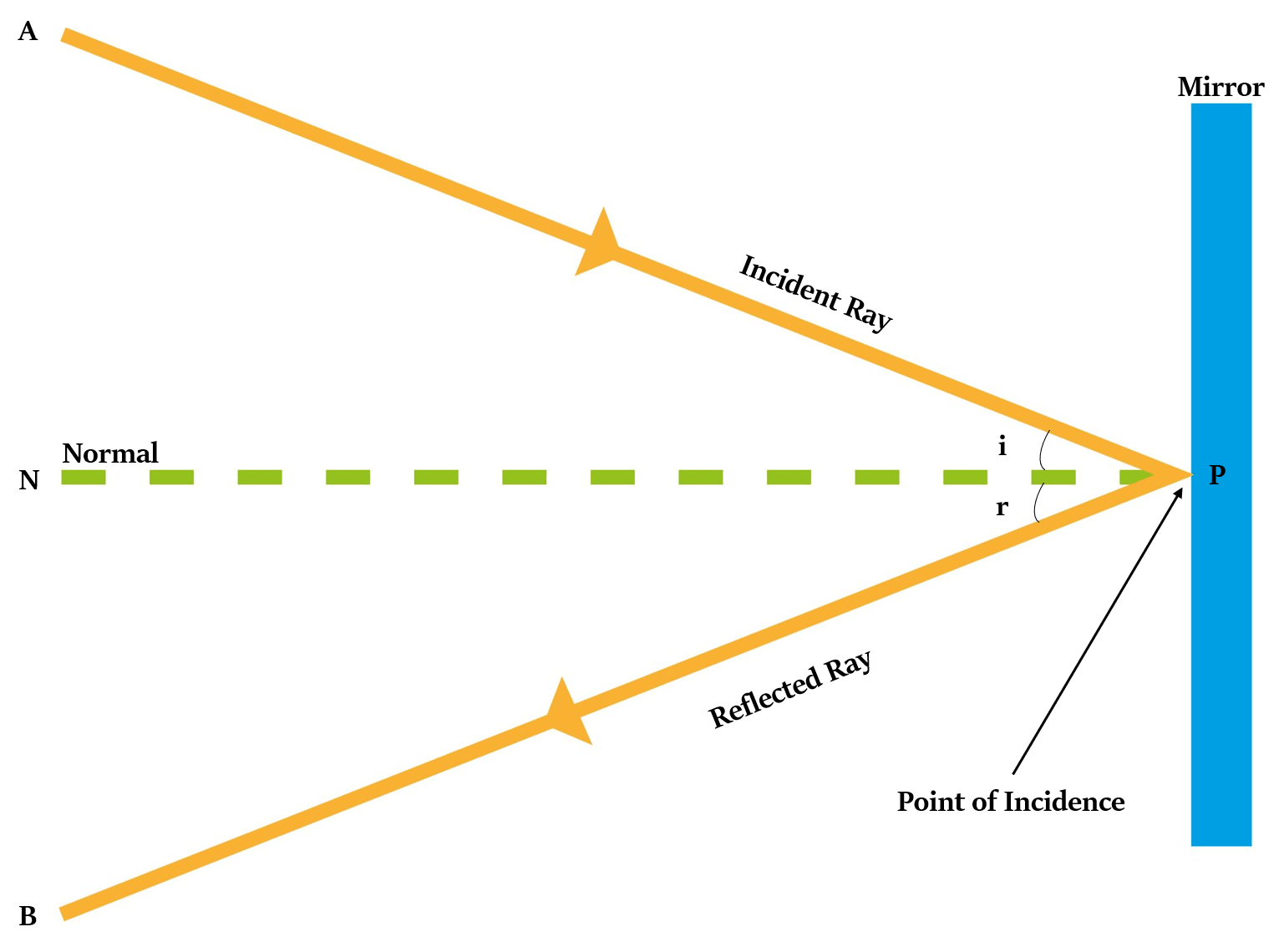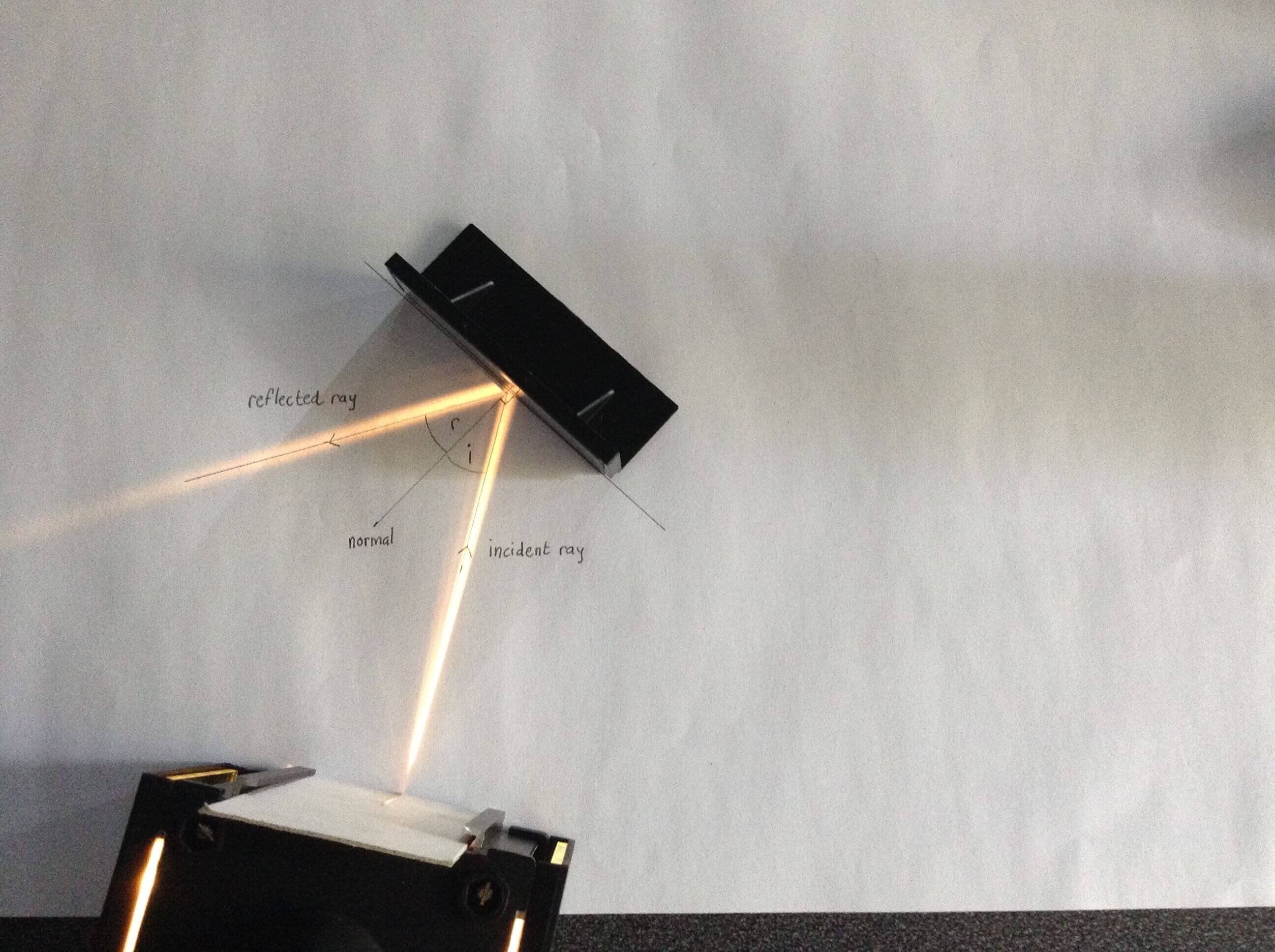Plane Mirrors and Concept of Reflection of Light
In this article, we will introduce you to some of the very basic properties of Light and shed some light on the concept of Plane Mirrors.
 Table of Contents
Table of Contents- What is Light?
- How does Light travel across space and matter?
- What is Reflection of Light?
- What are Mirrors?
- Characteristics of Image formed by Plane Mirror
- Uses of Plane Mirrors
What is Light?
Light (or visible light) is a small section of the electromagnetic spectrum that can be detected by human eyes.
Electromagnetic waves have a wide range of frequencies and wavelengths. But our retina cannot detect electromagnetic waves of very large wavelengths (e.g. Infrared) or those having very small wavelengths (e.g. X-rays). We can only detect electromagnetic waves whose wavelengths are in the range of about 400 nm to 750 nm. This is what we call “Light” in laymen terms.
 Optics
OpticsOptics is the branch of Physics wherein we study the behaviour and properties of light. Here we study how light interacts with matter around it, and the various instruments that we use to detect it.
 Dual nature of Light
Dual nature of LightWe already know that light is basically an Electromagnetic wave. Though just like other quantum level phenomenon, it has particle properties too. Light particle is called photon.
However, we will focus on duality of electromagnetic waves in a separate article.
How does Light travel across space and matter?
Light always travels in a straight line. It’s pretty easy to prove. If you have a laser or even a torch, you can place an opaque object in front of it and see that it blocks the light beam from travelling further. Instead, we get a shadow of that object on the screen behind it.

 Eclipses are caused due to Rectilinear Propagation of Light
Eclipses are caused due to Rectilinear Propagation of LightThis phenomenon is the reason behind solar and lunar eclipses.
Solar Eclipse: When the moon comes between the sun and the earth, stopping sunlight from reaching the surface of the earth. Sun becomes invisible from earth and we come under the shadow of the moon. So, moon here works as the opaque object.
Lunar Eclipse: When the earth comes between the sun and the moon, stopping sunlight from reaching the surface of the moon. Sun becomes invisible from moon, as the moon comes under the shadow of the earth. That’s why we cannot see moon during lunar eclipse (our earth’s shadow hides it in the night sky). So, earth here works as the opaque object.
We get to see these various types of eclipses just because light travels in a straight line in any medium.
The kind of shadow we will get will depend on the light source we are using.
- If we are using a point source of light, e.g. a laser beam, then shadow formed will be a region of total darkness. This region is called umbra.

- If we are using an extended source of light, e.g. a torch, then shadow formed will have two regions. The middle umbra region will be a region of total darkness. But it will also be surrounded by a region of partial darkness, called penumbra.
 Note
NoteUnlike sound waves that can bend over the corners and still propagate further, light waves always travel in straight lines. That’s why we can hear voices of people in nearby rooms, even though we cannot see them.
What is Reflection of Light?
Though light always travels in straight lines, but it may bend and reflect off surfaces. For example, light deflects from its original path when it enters a glass medium (e.g. a prism). This is called refraction. It also bends near heavy bodies in space (e.g. near our Sun), due to the curvature in space-time brought about by gravity (it was suggested by Einstein).
There are many other phenomena related with light, e.g. it scatters on striking small particles giving sky its blue colour, it splits into its components on entering a prism or such other medium (rainbows are caused due to this phenomenon), etc.
However, our focus here will be on the phenomenon of Reflection of Light. Let’s understand it.
Reflection of Light: When a beam of light falls on a surface and is thrown back in the same medium, then this phenomenon is called Reflection of Light.
This has been represented in the figure given below:

In the above figure, a plane mirror is working as the surface reflecting the light.
Laws of Reflection
Now, let’s see some of the terminologies and laws related to the phenomenon of reflection of light.
- The incoming light beam is often called the Incident ray and outgoing light beam is often called the Reflected ray. The virtual line drawn through the point of incidence and perpendicular to the reflecting surface is called Normal.
- Incident ray, Reflected ray, and Normal all lie in the same plane.
- Angle of Incidence (∠i) = Angle of Reflection (∠r)
 Note
NoteColour of an object depends on the kind of visible light reflected by it. For example, plants look green because they reflect green light. Blood looks red, because it reflects red light.
What are Mirrors?
When it comes to reflection, we often use mirrors. That is, you will often find mirrors working as the surface reflecting a light beam.
As most of us already know, a mirror is basically a glass surface with one face polished.
- A plane glass surface is called a Plane Mirror.
- A curved glass surface is called a Spherical Mirror.
What is a Plane Mirror?
A plane mirror is a plane glass surface with one face polished.
Characteristics of Image formed by Plane Mirror
Characteristics related to Image Distance, Size and Nature
The distance of an object from a plane mirror is equal to the distance of its image from the plane mirror. So, if an object is d units in front of a mirror, then its image will be d units behind the mirror. The line joining the object with its image is normal to the plane mirror.
In case of plane mirrors, Size of Image = Size of Object
Image formed by a plane mirror is: Virtual, Erect, and Laterally Inverted (the right side of the object appears as left side of the image and vice-versa)
 Note
NoteTo form full-size image of an object, the size of the plane mirror must at least be half of the linear size of the object.
Characteristics related to Movement of Mirror or Object
- If plane mirror is rotated by θ degrees, then the reflected ray will be rotated through twice that angle, i.e. by 2θ degrees.
- If an object moves towards the mirror with speed v units/second, then its image appears to move towards the object with double this speed, i.e. with 2v units/second.
Characteristics related to Multiple Mirrors
- If two plane mirrors are placed parallel to each other, then infinite number of images are formed.
However, if the two plane mirrors are not parallel, then the number of images formed are finite. Number of images of an object, which is situated between two plane mirrors inclined at an angle θ, n = \(\frac{360°}{θ} - 1\)
Uses of Plane Mirrors
Plane mirrors are one of the most widely used mirrors. Let us list down some of their uses.
- It’s used in looking glass.
- It’s used in kaleidoscope, periscope, etc.

